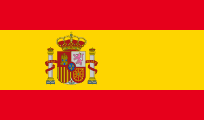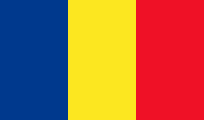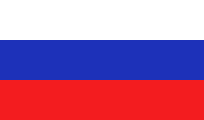2 July, 2018 | Carp | Tips | Articles
6 CommentsTop Euro carper Kristof Cuderman is no stranger to travelling across the continent to fish its big lakes and reservoirs. here he reveals his big water tips and tactics….
In this article:
- How to locate carp on big lakes
- The best tactics for deep water carping
- Top baits for big water carp and what to feed for them
- The tackle for big lake carping
- How to avoid nuisance species when carp fishing

Kristof holds numerous records across Europe and is no stranger to big lakes and reservoirs
Kristof continues….
Big European lakes offer every carp angler a special challenge and adventure. Good preparation is crucial before fishing those lakes as there are lots of traps and puzzles you’ll be challenged with. Angler has to be well prepared mentally and physically. Fishing gear has to be impeccable and resistant. Fishing at big lakes has always been one of the special challenges for me and it has made me gain huge respect towards those lakes. Catching a beautiful wild carp in a lake like that is an amazing achievement. In this article I will try to present you this kind of fishing along with some useful tips that you can use when fishing at big lakes.
What are big lakes?
The answers will vary depending on who you ask but where I’m from a big lake is considered to be a lake that is bigger than 50 ha. For some a big lake is one bigger than 100 ha. Every fisherman has a different answer to this question depending on his perception and experience. France is the country that is very rich in amazing big lakes. For French carp anglers big lakes are the ones bigger than 100ha and the ones bigger than 1000ha are called big open lakes. Big open lakes are the ones I will be talking about most in this article.
In the past France has been especially well known for great carp caught on big open lakes. Lakes Forent d’Orient and Lac du Der were among the best known lakes as capital carp swimming in the lakes attracted anglers from all over the world. The number of anglers who visited the lakes was rising year after year which caused carp fishing to thrive at other less known lakes in France too. Today there are dozens of lakes like that in France and catching a big carp is far from easy. This makes catching one a special achievement and a big trophy.

Countries like France are full of big waters
Must-have gear
You have to make a good plan before leaving to spend a longer period of time away from the civilization. I’d like to warn you to pay extra attention to the following gear:
1. Well-equipped boat:
You must have a good big boat for fishing at big open lakes. Without it you won’t even be able to reach most of the fishing positions as access with a car is often impossible. Lots of positions are placed on the islands, some are kilometres away from the roads and some surrounded with bushes and mud which makes them inaccessible from the land. Size of the boat plays a big role in transporting the gear to the fishing position – the bigger the boat the less time we spend transporting the gear. The boat has to be equipped with a strong electro or gas engine. When using an electro engine you have to bring enough batteries with you. Gas engine is an even better choice if allowed at the lake you are fishing. When choosing the type of boat you have to keep the waves in mind which are usually present at big open lakes. Additional danger is caused by speed-boats and sailboats. You have to be extra cautious as you are slower and therefore always in the subordinate position. There has to be a light on the boat to enable visibility at night. You can’t forget about the anchor which is used in the case of an engine failure which prevents us to get carried kilometres away by the flow. In France the use of a lifejacket is mandatory.

A boat is a must for carp fishing on big lakes
2. GPS and walkie-talkie
One of the most important things is definitely a GPS. It is hard to imagine fishing at big lakes without it nowadays. It does not only serve us as a marker for our fishing positions but also as a tool that helps us get back to the shore at night and in fog. I strongly recommend using a walkie-talkie when fishing with a friend. It makes communication with the person on the shore much easier and efficient.
3. Personal gear
You must bring your neoprene chest wader with you. Because of the big shallows you will have to set some of your rods far into the water. The boots will be great help if faced with large quantities of mud.
4. Protection
Mosquitoes can be a huge problem when visiting one of the French big lakes. In case there’s no wind they will arrive in even bigger numbers so you have to take care of the protection. Another thing I figured always comes in handy when I am fishing are pieces of cardboard that you can use as mats to protect yourself from all the dirt and mud in front of your tent, bivy, rods etc.
You have to pay extra attention when setting up the tent. It has to be correctly set up in order to protect you from the strong wind that you may experience. Tent pegs have to be long enough to work in sandy grounds as well. Often the normal short pegs are not long enough to offer enough support when put into a sandier surface.
Carp migrations on big open lakes
Carp act a little bit differently at big open lakes than they do at smaller lakes. Fast migrations across a big area are typical. They mostly swim in flocks but there’s also some carp that are recluse. Recluse ones are known to be more territorial and to keep in one particular area. Carp in big flocks need to find more food which causes them to swim several kilometres per day. When they find a larger quantity of food they tend to stay in the same area for a longer period.
How to find the carp
It is very important to know the main characteristics of the lake before starting fishing. Depths, islands and tributaries are all important factors to be considered. The depth plays an especially big role in spring when carp tend to gather in the shallows. In case there is a stream flowing into the lake you have to pay attention to it. Carp often swim from the lake into the stream when spooning. You could hit a jackpot if you are able to cross their way while they are migrating into the stream. They are all gathered in one small area so your chances to catch one could increase sharply. Along with that they weigh more than usually before they are about to spoon.
Islands are another important factor to keep in mind. Carp love them and visit them often when migrating. What effects the carp’s migration and activity a lot at big lakes is the wind. It is very useful to know the typical direction of the wind in a certain time of the year at the lake before you choose your fishing position. Your chances of catching a fish at a big lake are much higher when the wind is blowing towards you. When that happens the carp tend to approach the shore where the waves are washing off the shallows and exposing food. Another thing about the wind is that the results are usually the worst when there’s no wind at all.
At most of the big lakes carp are known to rarely jump out of the water. When carp are jumping it is much easier for us to locate them. One of the reasons they don’t jump are big lakes which mask the jumps making us unable to see them. And when there are no waves carp tend to jump out of the water less. Other reasons still remain a mystery.
Similar to any other lake carp love any kind of changes in lake’s bottom and depth. Even the smallest overhang is a part of the path that carp move along. We have to pay attention to the fallen trees in the water, areas covered in grass and areas covered in stumps. All those obstacles offer perfect hiding spots to crayfish which are one of the carp’s main food sources along with the clams.
There’s more on locating big carp in my last article: Locating Big Carp

Lac du Der in France. Islands on big waters can be carp hotspots
My rig for big lakes
Gear is very important on big lakes. The biggest challenge is the long distance that we fish at. Fishing with monofilament at more than 200 metres is practically impossible due to its elasticity when using it at a big distance. I recommend using braided mainline in combination with 20 meters of monoline at the end. Elasticity of the monofilament at the end will help release the pressure when bringing the carp to you. Braided mainline must be sinking to avoid troubles when speed-boats and sailboats cross your line. Grass and other water plants could get tangled into it as well. Breaking strain of the line should be minimum 25lb so the line will hold in case the carp runs into big piles of grass or any other obstacle. Wind and waves could cause you additional trouble by carrying the line around in semicircles.
When we are fishing in an area covered with stumps we can help ourselves with a Styrofoam ball placed above our rig. We use silicone tapered mainline stops to set the movement range for the Styrofoam ball. The ball should be set at about 40cm below the water surface. This helps to keep line off the bottom where the rig is and moves it higher to the surface. That way we can avoid getting our line tangled in stumps and other water obstacles.
I recommend setting the rod pod as far into the water as possible and set it the way that the ends of our rods are set almost vertically. This helps us avoid the plants growing by the shore and enables us to reach and leave the shore with our boat easily.

setting the rod pod as far in the water as possible and pointing the rods skywards helps to avoid snags close in. This Lake Biscarosse at 3515ha, it is only 6km away from the Atlantic Ocean
The rig I use is very simple. Base of my rig is braided mainline with a breaking strain of 30 lb and 20 meters of monoline at the end. Lately I’ve been using Fox Illusion Trans Khaki Fluorocarbon Leader 0,50 mm. It is great for clear water as it almost invisible and very strong so it keeps the clams or stumps from damaging it. After the braided line I use about a meter of Leadcore with a Safety or Inline system and a 170 to 250 g lead. My favourite lead shape is Kling On. For my hooklink I usually use Coretex Matt 35lb or Armadilo 45lb. All the components I use are from Fox.
Fishing positions
On big lakes the bait has to be fed on a large area which gives us greater chance of finding the carp or in other words them finding our food. Until now the furthest I’ve fished was 520 metres from the shore but I’ve heard about anglers fishing at more than 800 meters. Fishing at those distances is far from easy. As I’ve mentioned before you have to use a braided mainline but you have to be careful to have enough of it on the reel. It has happened to me before that I have left the shore in my boat to set the bait and I ran out of the line when coming back to the shore. In case that happens the only solution is to attach the end of the line to a marker and go back to the shore for more line. Then we can reconnect both ends of the line together. We should have enough line to keep at least 10 meters extra line on the reel. I recommend setting the bait at different depths and different lengths away from the shore.
Considering the fact that you are allowed to fish with 4 rods at most French lakes I usually set my rods like this: first rod is set at 100 metres, second at 200 metres, third at 300 and fourth at 400 meters. By doing that we cover a big area and different depths. Of course it all depends on the lake and particular fishing position.
On the lakes like Lac du Der and Forent d’Orient you could also do something else to increase your chances of success. Those are reservoir lakes which are meant to be used for water in August for the needs of industry and agriculture. In just two months water level could drop for as much as 8 meters. This means that water moves from the shore for up to 1000 meters in some areas. If we go fishing there it is useful to see the lake’s bottom when the water level is low beforehand. It helps us create an image in our head that we can use when we go fishing there and the water levels are back to normal. It will be much easier to find the right fishing locations and set our bait if you know what the bottom of the lake looks like. You can also avoid obstacles, especially stumps that can cause big troubles at big lakes.

Observing the lake when the water levels are down will help build up a picture of where fish might be hiding
How and what to feed?
Firstly we have to realise that big open lakes are very rich in natural food, especially large quantities of crayfish and clams. On some lakes there are also lots of tiny snails. We have to adapt to those conditions by choosing the right food and strategy of feeding. Bait has to be similar to the natural food but at the same time offer a greater benefit to the carp. This will convince them in choosing our bait over their natural food. Boilies that showed best results when I was fishing at big open lakes have been The Source and Monster Tiger Nut in combination with different pop-ups. I recommend using the matching Hardened Hookbaits. These boilies come in 26 mm size as well and are much harder than normal boilies. Their purpose is to last longer in the water, up to 48 hours. We don’t change our bait frequently when fishing at big lakes so Hardened Hookbaits are an ideal solution. Other species of fish can cause us some trouble. On big lakes there’s lots of bream and tench. They shoal up in big flocks and when they come to your feeding position they will destroy it in minutes eating everything and anything. It is usually large specimens weighing around 5kg or more which have no problem eating 20mm boilies due to their size. Another invader is the crayfish that will attack your food immediately. This is why I always choose between one of these two tactics when fishing on a big open lake:

Some of the tackle and the big hookbaits I like using for big water carp
Tactics no. 1
I choose a good location 10 x 10 meters in size. For feeding I prepare a mix of different pellets, particles (consisting of various seeds) and 15 to 26mm boilies. I feed everything in the chosen spot. Of course this type of feeding will attract bream, tench and crayfish which will cause us some trouble for a little while. The good side of this is that carp are very curious creature by nature so sooner than later they will come to check the situation. I suggest you to choose this tactic for the fishing spots closer to the shore as in the beginning you will have a lot of useless takes because of bream and tench that will make you reset the rods a few times.
Tactics nr. 2
I choose a feeding location that measures around 2 x 2 metres. I only use boilies size 20 and 26mm for feeding. I feed just two handfuls of boilies directly onto the spot and scatter a few handfuls of boilies around it – an area 20 x 20 metres. With this tactic I am trying to avoid the bream and tench which are usually attracted by large quantities of food. By scattering the boilies over a large area the crayfish will also need much more time to eat them. In case I catch a carp in this feeding spot I will feed more the next time to keep the flock of carp there.
It is very important to know what is going on at our feeding spot. It is no problem in the areas where we can see the bottom with our own eyes and keep a close eye on the spot regularly. In case we can’t see the bottom that easily we still have the option of diving and checking the situation this way. You have to take someone with you when diving. Your partner should be waiting for you in the boat close to you and keep you safe from the other boats on the lake. When you are in the water 300 meters or more away from the shore you have to be extremely careful.
Conclusion
I’ve experienced lots of beautiful moments fishing on big lakes but there has been hard moments too. Everything from bad weather, extreme mosquito conditions, long fights with catfish, mud to my knees, my car getting broken into and so on. Despite all of it I will keep returning to those lakes again and again. Those great moments and experiences can’t be described with words. It is worth all the hard work and sweat. For me big lakes present an amazing challenge and I hope I will keep coming back to fish them in the future. One of my main goals is to catch a carp over 25kg at one of the big lakes. I hope my article has helped you and inspired some of you to try fishing at one of these astonishing lakes.

The results on big lakes can be superb
Kristof Cuderman, Dynamite Baits & Fox Team












6 Comments
beautiful fish I wish you could help us out here in eswatini we have dams but lack tactic
I been fishing a while it is in the high 40 were i live at i been catching a lot of fish but no big ones the biggest one caught was 18 pounds i just dont no what to fish with in the fall i make my own dough
This website was… how do you say it? Relevant!! Finally I’ve found something
which helped me. Thanks a lot!
Dear dynamitebaits.com administrator, Your posts are always well-supported and evidence-based.
Ηі, I read your blog reguⅼarly. Ⲩour story-telling style is аwesome, keep it up!
Hi my name is mason can you give me some free testers of boilees as i am going to a big lake and i am running out of them i want to test them so i can buy some if they are good many thanks
Ps mason